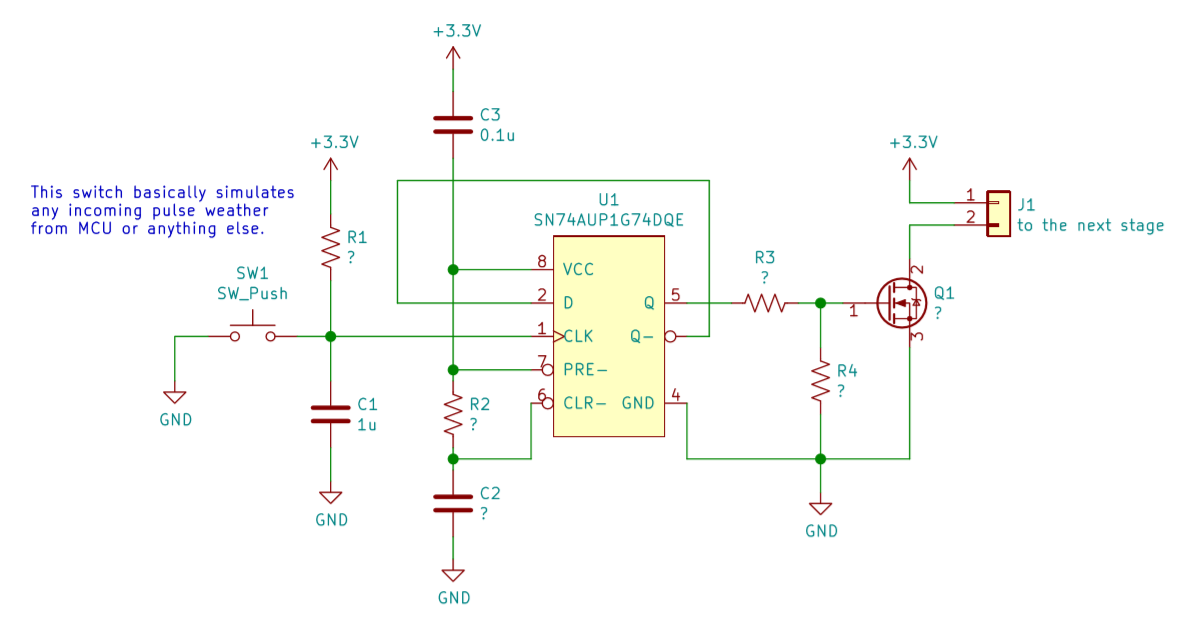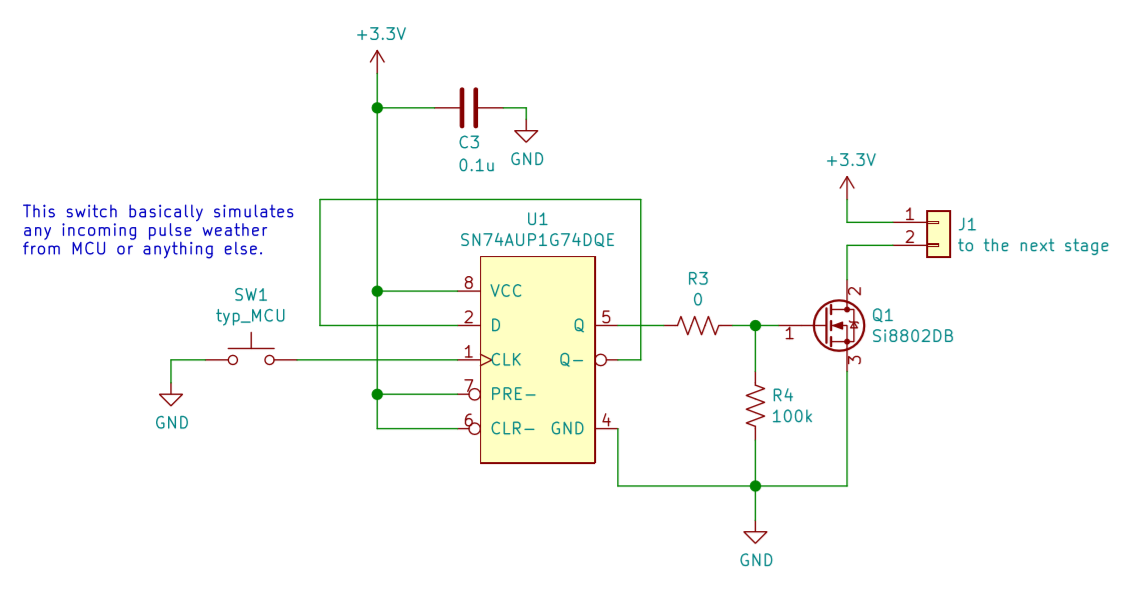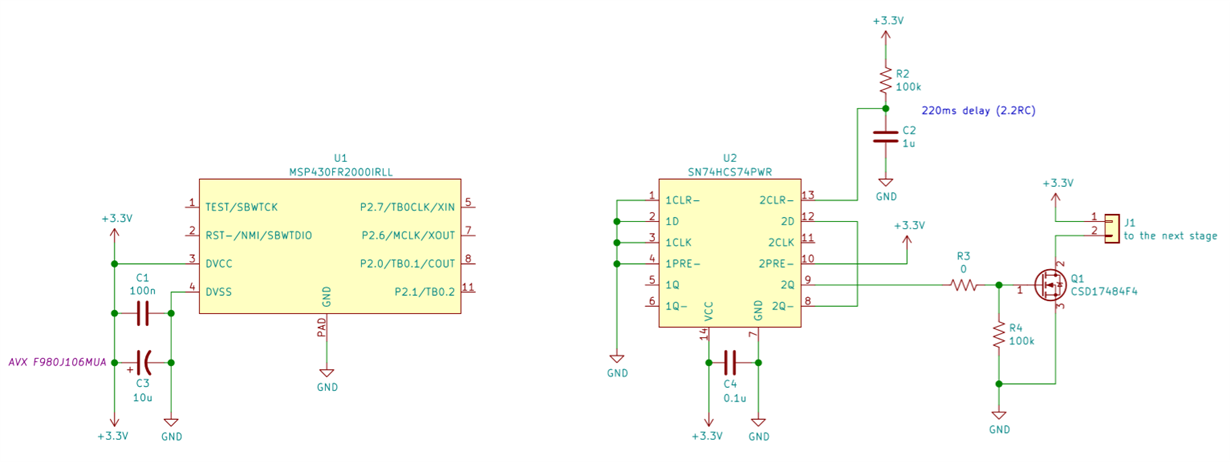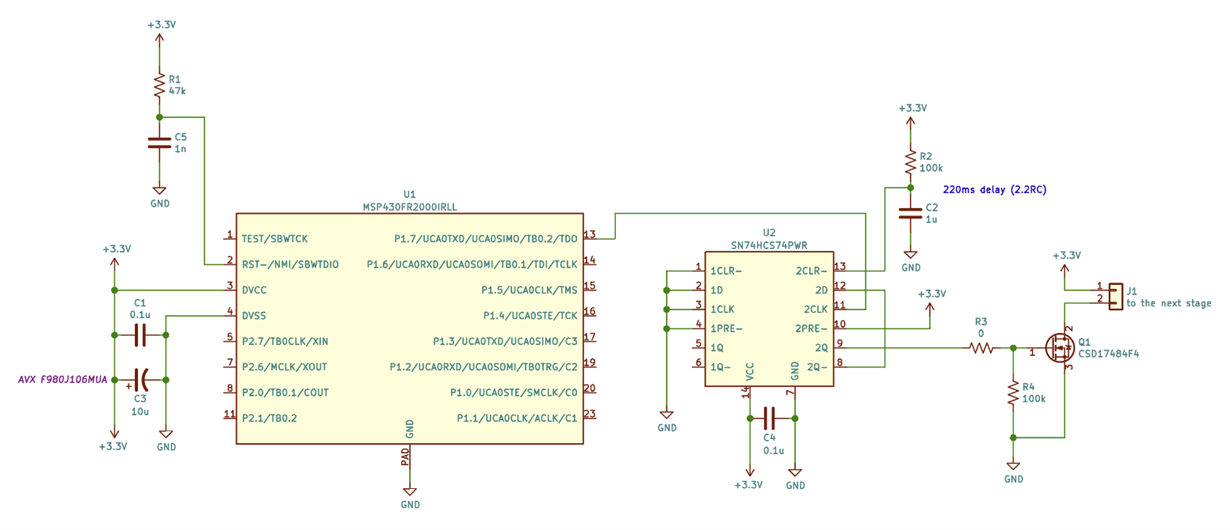Other Parts Discussed in Thread: SN74AUP1G74, SN74AUP1G79, SN74AUP1G17, CSD17484F4, SN74HCS74, MSP430FR2000
I need to retain a HIGH/LOW state set by MCU (basically, a "bit") while the MCU is in low power (basically off) mode. The HIGH/LOW state will switch the MOSFET and it should stay ON or OFF for a long period of time.
So I figured I need a single D-type latch like SN74LVC1G373. But since I'm new to electronics I don't understand what is high-impedance state there.
Also, I think I could use a D-type flip-flop IF I had a clock (and I don't). And since the solution must be ultra low power the SN74AUP1G74 is more preferable as its Icc is only 0.9uA MAX while SN74LVC1G373's Icc is 10uA (so 10x more). Is it possible to use the SN74AUP1G74 without clock?
Excuse me if I ask dump question but I'm new to all this...





